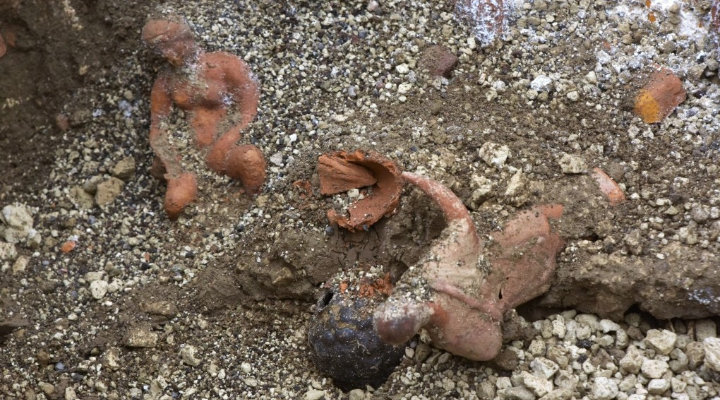
Although the creation of nativity scenes is a relatively modern practice, clues to ancient domestic celebrations have been discovered. In a domus near the House of Leda and the Swan, during excavation and restoration works, 13 terracotta statuettes were uncovered, evidence of a past ritual.
According to reports in the E-journal of Pompeii excavations, various sculptures about 15 cm tall were found, including human figurines, a walnut, an almond, a clay rooster head, and a glass pine cone, all erected on a flat surface, probably above a shelf.
These works were found buried under lapilli, at a height of over 2 meters above the floor level. The discovery area, which could be the atrium of the house, was decorated, and some of these decorations were discovered on the upper parts of the walls.
Preliminary studies suggest that some of the sculptures could be related to the myth of Cybele and Attis, symbols of the seasons, the fertility of the earth, and the spring equinox.
The excavation site includes areas already explored in the House of Leda (discovered between 2018 and 2019 as part of the Great Pompeii Project), as well as two adjacent domus, to the north and south of the House of Leda, whose identities have not yet been fully determined.
During the removal of soil from the interiors of the House of Leda, to reach the original floor level, a room adorned with frescoes was discovered, among which stand out four portraits of women of refined elegance.
The purpose of these excavations is to secure the area and preserve the decorative elements, with the goal of making the site accessible to the public.
Source: Pompeii Archaeological Park



